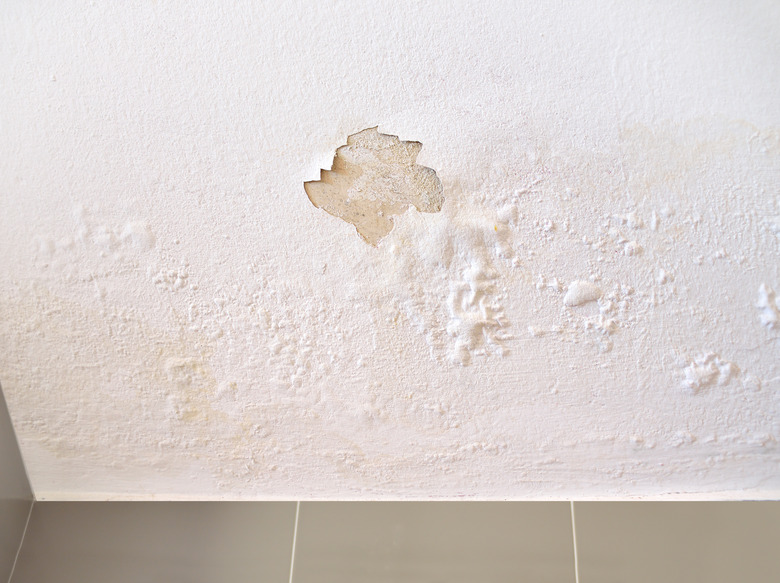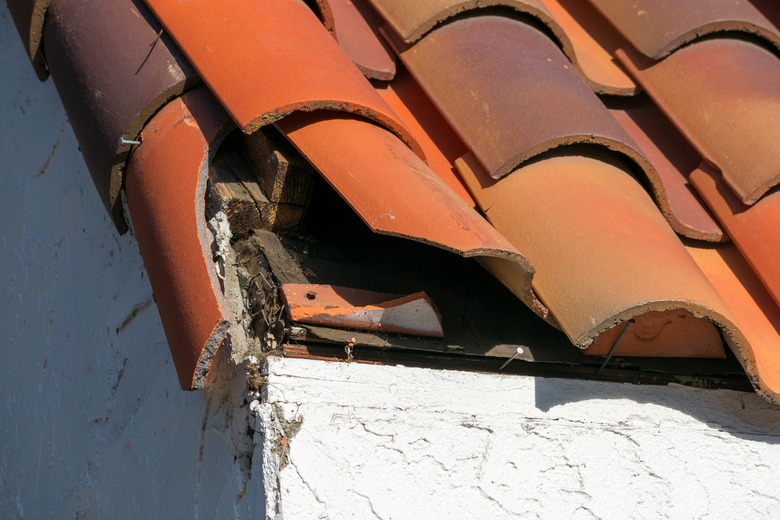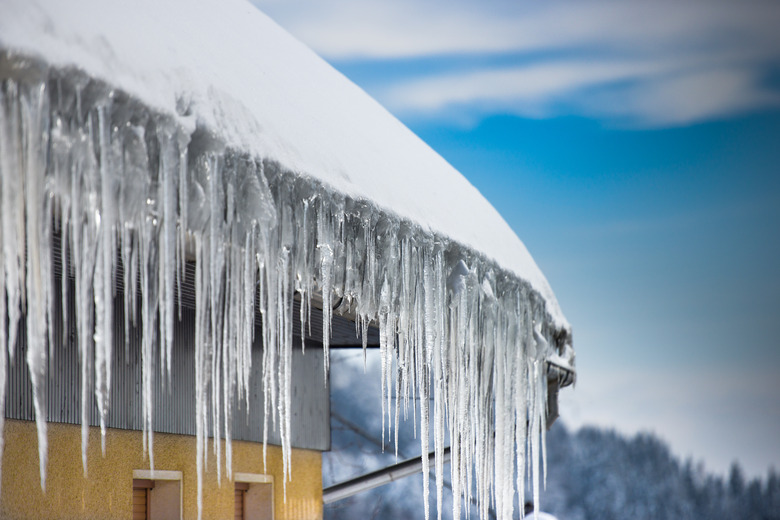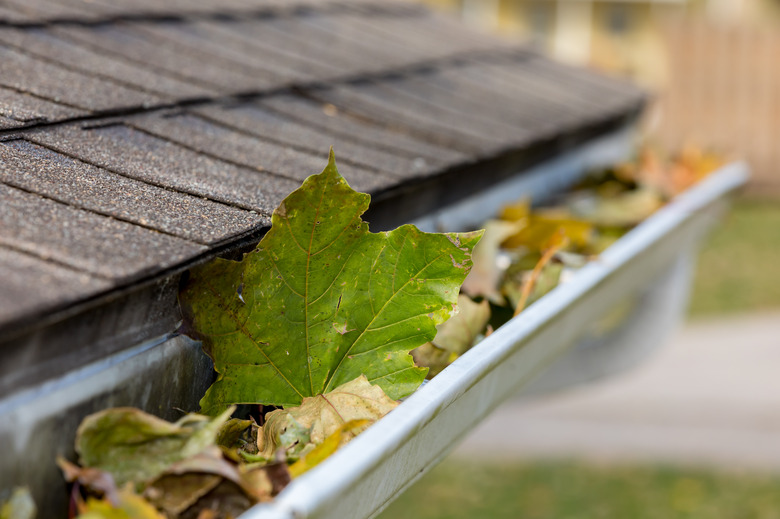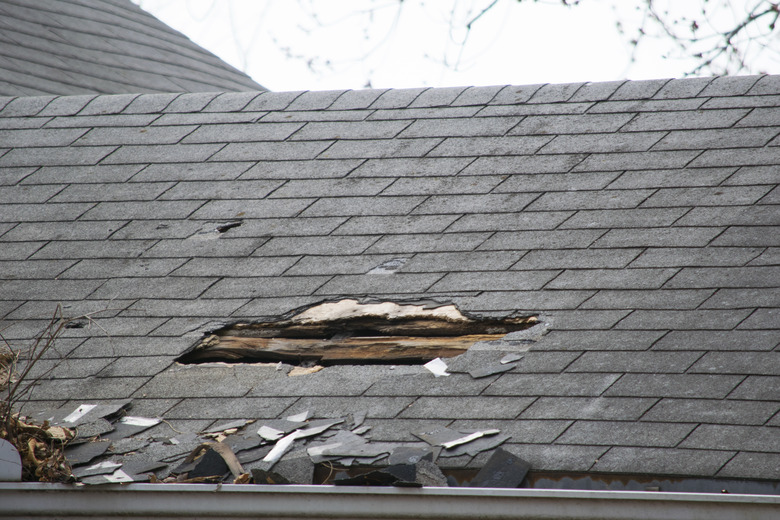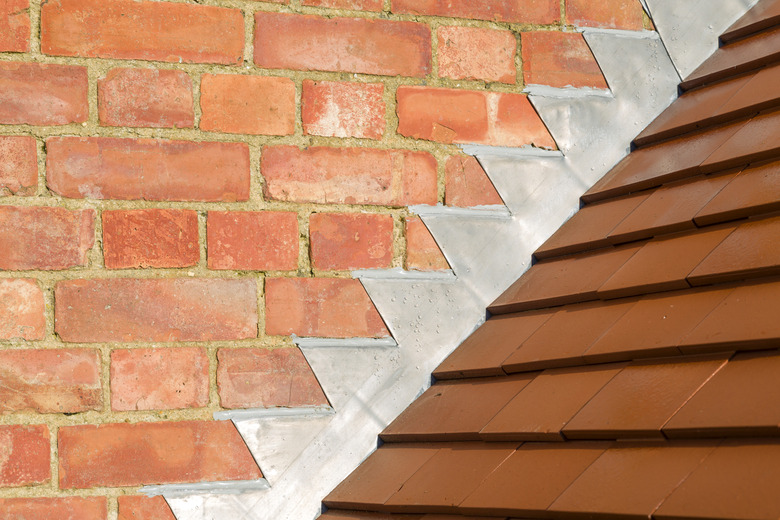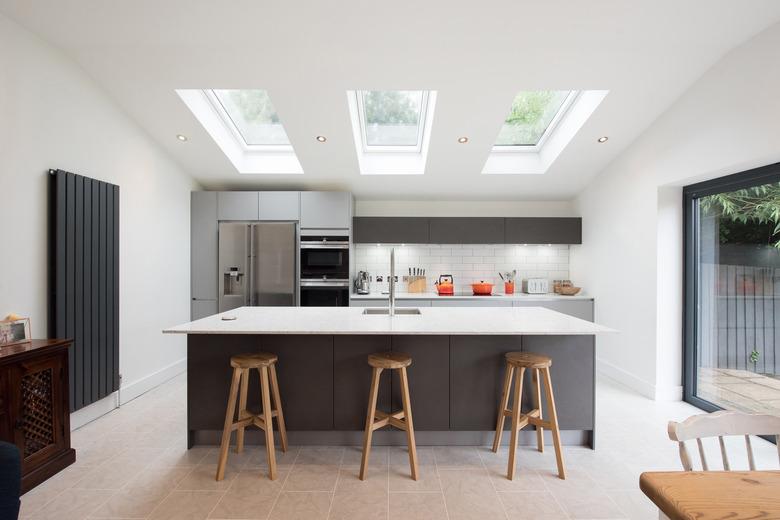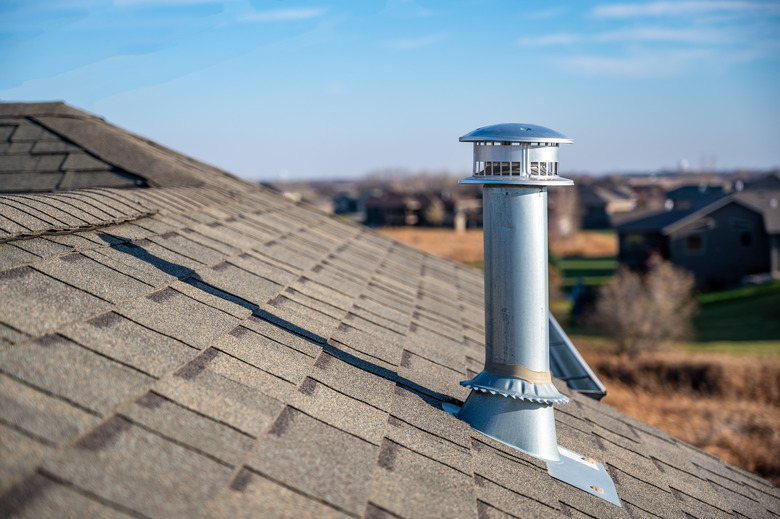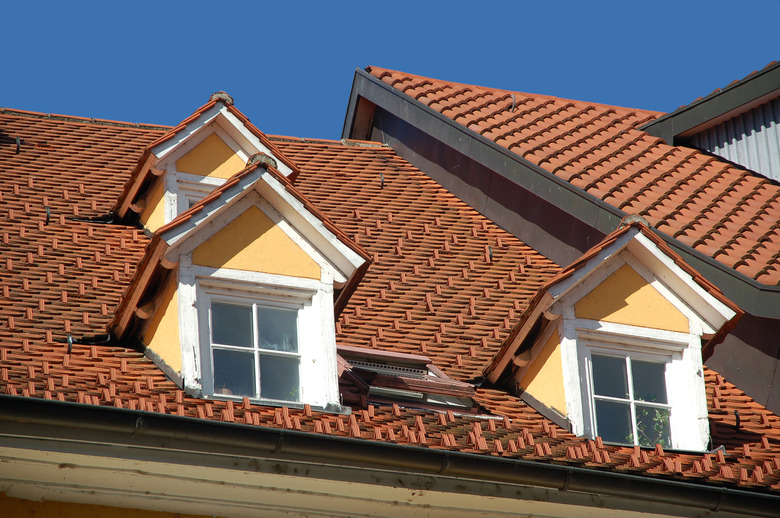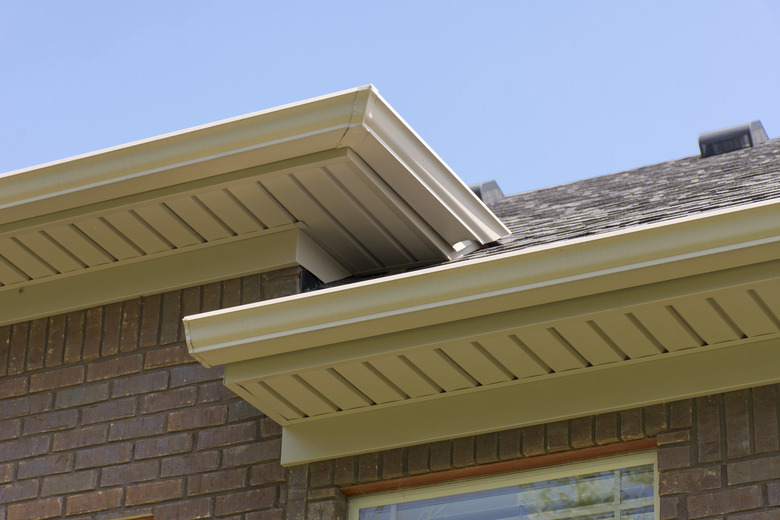9 Common Causes Of A Leaky Roof — And How To Fix Them
We may receive a commission on purchases made from links.
The drip, drip, drip of a roof leak can be unsettling and a little scary if you've never faced the situation before. Your home's roof is a crucial structural component that needs proper care so it can protect the rest of the home. When you notice a leak, doing a little investigating can help you spot the common causes and decide what to do. Some roof damage is easy enough for homeowners to fix, but other issues are better left to a roofing company.
1. Missing or Damaged Shingles
1. Missing or Damaged Shingles
One obvious cause of a leaky roof is damaged or missing shingles. Your shingles provide a barrier and help direct the water off the roof, so you can have major roof issues when something happens to them. Heavy winds, branches on the roof, and other issues can cause damaged shingles. When you're missing shingles or the shingles are cracked, curled, or otherwise damaged, they allow water to reach the structural parts of the roof. The water can seep into your home, where it can cause water stains on the ceilings and rotting in the structural components.
You can usually spot damaged or missing shingles with a quick roof inspection. To climb on the roof safely, ensure the weather is appropriate, you're wearing suitable shoes, and your extension ladder is secured.
How to Fix It
If you catch the shingle damage early before the roof starts to rot, you can usually fix the issue by replacing the missing or damaged area of shingles. Curled shingles can sometimes be fixed by using roofing sealant to attach the curled corners to the roof. You can also use roof sealant to fix a cracked shingle. Spread sealant under the crack, push down the shingle, apply more sealant over the crack, and smooth it out with a putty knife.
If the damage is more severe, you'll need to repair or replace more of the roof. You might need to replace rotten roof decking, for example. If the majority of the shingles are damaged, especially if the roof is getting old anyway, a complete roof replacement might be the best solution. Have a roofer inspect the damage if you're uncertain on how to move forward.
2. Ice Dam Damage
2. Ice Dam Damage
An ice dam forms when your roof is too warm and melts the snow, but the snow freezes again as it gets closer to the eaves, where it's usually colder. The melting snow continues to build up as thick ice on the roof. When it melts again, the water can enter your home, coming in through your roof and causing water damage to your ceiling and drywall. Ice dams can also loosen your gutters and damage your shingles.
How to Fix It
Never climb on the roof during winter weather conditions to remove snow or ice. Avoid pounding on or chiseling the ice because you might damage your shingles. One way to melt channels in the ice is to place calcium chloride ice melt in pantyhose. Position the pantyhose vertically over the ice dam with the end going into the gutter. This will melt a vertical channel in the ice to allow melting water to run into the gutter.
You might also need to repair the damage caused by the ice dam. A roofing contractor can inspect the shingles and roof to determine the necessary repairs, which might include repairing the shingles, roof decking, ceilings, and drywall.
You can prevent future ice dams by installing heated cables in a zigzag pattern near the edge of the roof. You can also use a roof rake to pull snow off the roof from the ground. Keeping your attic colder in the winter with proper ventilation and insulation can also stop ice dams by preventing the snow from melting and refreezing.
3. Clogged Rain Gutters
3. Clogged Rain Gutters
No one wants to climb a ladder and dig leaf gunk out of the gutters, but it's a necessary part of home ownership to keep the water flowing. If your gutters get clogged, the water that runs off your roof has nowhere to go. Sometimes, it will cascade over your gutters, where it can cause foundation issues. Other times, it pools and pushes up under your shingles, where it can damage your roof and cause leaks.
This type of roof leak typically happens near the eaves where the water pushes under the shingles. You can confirm the cause by climbing a ladder and checking the gutters for debris. You might also notice the water pooling or spilling over the gutters during heavy rains.
How to Fix It
Start by immediately clearing the debris from your gutters. Wear work gloves to protect your hands from screws and sharp edges on the gutters. A garden trowel or similar small scoop can help you dig out the debris. Regularly cleaning your gutters and downspouts prevents the backup that causes this type of roof leak. Installing gutter guards can cut down on the buildup in the gutters.
4. Roof Leak From a Hole
4. Roof Leak From a Hole
Holes of all sizes on the roof provide the perfect pathway for water to reach inside. Things like old satellite dishes that were attached to the roof create holes when the brackets are removed. Impact on the roof can create a larger hole as well. Small holes are easy to miss, but they can let in plenty of water over time and cause major roof damage.
How to Fix It
If the hole goes through the roof decking, you'll need to patch it with plywood to fix the hole in the roof. You can then replace the underlayment and install new shingles over the patched area. For small nail or screw holes, you can use roofing cement to seal the hole, or you can cover it with sheet metal using roofing cement to hold the metal in place. After securing the sheet metal, replace the shingles over the area.
5. Damaged or Incorrectly Installed Flashing
5. Damaged or Incorrectly Installed Flashing
Roof flashing goes along joints on the roof where water can easily penetrate. If your roof flashing is installed incorrectly or becomes damaged, it can allow water to leak into the joints it's supposed to protect. Flashing can wear or rust over time, or it can become damaged due to impact or extreme temperature fluctuations. If flashing becomes loose, water can often get behind it and get into the house.
How to Fix It
Replacing the damaged flashing should correct the leaking issues at the joints. You'll need to remove the shingles along the flashing to replace it. Letting a professional handle flashing repair is usually easier than a DIY job to prevent damage to the shingles.
If the flashing just has a few pinholes in it, roofing cement can temporarily plug the holes. Larger holes up to about 3/4 inch can be patched using more flashing material without replacing the entire piece of flashing. You can use roofing cement to attach the patch.
6. A Damaged Skylight
6. A Damaged Skylight
A skylight or roof window brightens your space, but it also offers another entry point for water. If it's not installed correctly, the skylight can leak. This type of roof leak is usually easy to spot since the water comes in around the skylight. Cracks in the glass can also cause leaks.
How to Fix It
Start with an inspection to look for cracks or gaps on the skylight itself. You might be able to seal the cracks to repair the issue. If you don't see any obvious damage or the water seems to leak around the edges of the skylight, you'll likely need to replace the window flashing.
7. Damaged Vents and Boots
7. Damaged Vents and Boots
Your roof likely has several vents for ventilating the attic or terminating vent ducts from bathroom or kitchen fans. The roof vents need proper sealing around them to prevent water from leaking in. Plumbing boots can be made of different materials, including plastic, metal, and rubber or a combination. Depending on the material, it can crack, rot, tear, or otherwise receive damage that lets water enter around the vent pipes on your roof.
Sometimes, the vents themselves are damaged enough to let water inside your home. Plastic vents are prone to cracking, but even metal vents can come apart at the seams and allow an entry point for water. The vents can also come loose or lose screws that hold them in place.
How to Fix It
A damaged vent boot needs to be replaced to repair the issue. If you don't notice any damage, look for missing or loose nails along the boot that might be allowing in water. Reattaching the boot might fix the leaking situation.
If the vent is damaged, replacing it is the only long-term solution to prevent leaking. Caulking it without replacing the damaged portion won't hold for long. If the issue is loose fasteners, you might be able to tighten the screws on the vent to repair the issue.
8. Roof Pitch Issues
8. Roof Pitch Issues
Your roof pitch can affect how well water runs off the roof. It can also impact the type of roofing material that you should use and special installation requirements for the roofing. Low slopes often present the greatest potential for leaks because the water does not flow off the roof as easily or as quickly as it does with a steeper slope.
Using the wrong type of roofing material on a low slope or installing the roofing incorrectly can increase the risk of leaks. For example, wood shakes and shingles have an increased risk of leaking, especially on low-slope roofs because they don't lie flat and tightly together like other roofing materials. Standard installation of wood roofing usually requires a minimum slope of 3:12 for shingles and 4:12 for shakes. Lower slopes require wood roofing to be installed over a built-up roof or membrane roof and often require a reduced exposure, which is the amount of the shingle or shake that's exposed to the elements. If the roofing isn't installed correctly for the slope of the roof, you might have leaking issues.
How to Fix It
Keeping a low-sloped roof free of debris can prevent water pooling to reduce leaking risks. Regularly scheduled maintenance can ensure the roofing membrane on a low-slope roof remains intact. You might need to replace the entire roof if you have ongoing issues related to improper installation or a bad choice in roofing material for the slope.
9. Damaged Soffit or Fascia Boards
9. Damaged Soffit or Fascia Boards
Your home's fascia and soffits cover the roof rafters along the roof overhang. Because of their proximity to the gutters and the edges of the roof, they're susceptible to rotting, mold, and mildew. For example, if water runs between the gutters and the fascia boards, they will likely rot over time due to the excess moisture. The damage can continue to get worse and cause leaks inside your home.
References
How to Fix It
If the soffit or fascia boards become rotten, you'll need to replace the damaged areas. If the damage extends to the rafters, you might need to replace some of them as well. Ensuring your gutters are properly installed and remain free of clogs can prevent future damage.
